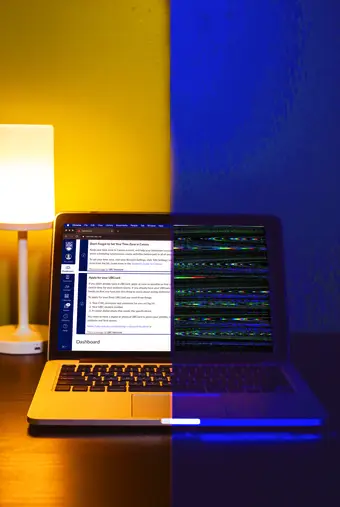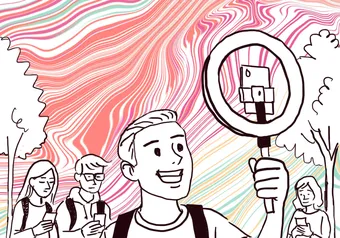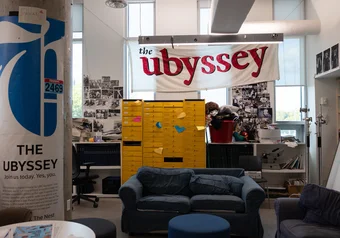The lights went out, leaving Vaane Tewari engulfed in darkness and the distress of missing another 2 a.m. class. She rubbed her eyes, and took a minute to shake herself out of the drowsiness of a warm mid-September night. With the air conditioning down, it would be hot.
Losing power in Indirapuram, India was nothing new to the first-year arts student. What had changed was her dependency on reliable internet and electricity to pursue her degree.
She sighed. At least this time, she hadn’t been in the middle of taking a quiz.
The transition to remote learning in the midst of the COVID-19 pandemic has presented new access challenges for UBC students, while exacerbating old inequalities. A survey conducted by the AMS in September revealed that 23.3 per cent of students did not have access to the necessary technology to complete their online classes. As the pandemic has resulted in widespread financial hardships, for many, technological upgrades for remote learning simply aren’t in the budget.
Tewari had been looking for solutions to her power outage problems for over a month. She resorted to using a mobile hotspot for internet access but she found it unreliable as well.
“I got my parents to buy an inverter, which is here now, but yeah, it did cost me a lot,” she said. It was just another burden on top of adopting a nocturnal lifestyle to attend her classes live.
On campus, Izzie Reyes was tired of waiting. The loading bar had been flickering for almost eight hours. The Windows-based software downloaded one per cent at a time onto her eight-year-old MacBook. She had a forestry lab due the next week and needed the lab work software, which only ran on Windows, to complete it.
“Earlier this summer, [the faculty] sent out an email saying what would be the optimal setup and ... it was already really alarming just because it was a setup that I don't think is standard for any person with just a basic laptop to have,” the third-year forestry student explained.
Reyes, an American student already feeling the strain of paying high tuition, was shocked. “One of the [optimal] requirements was 500 [gigabytes of] free disk space which, looking at Apple computers now or MacBooks — those are the top most expensive ones,” she said.
The ‘minimum’ set-up from the faculty still required a high quality webcam and microphone, 8 gigabytes of RAM and 250 gigabytes of free disk space. Reyes thought her MacBook probably had about five.
“I am not in a financial position to afford a new laptop right now,” Reyes said. “So I'm putting it off as long as I can. But every time I use it [I think] ‘Wow, I could cook an egg on this.’
“I appreciated that they sent out what to expect and kind of how to prepare ourselves, but … the optimal [setup] seemed unattainable.”
The loading bar was finally gone. In its place was an error message.
For days, Reyes struggled with accessing remote labs, finding it difficult to download UBC’s VPN. Once downloaded, she still couldn’t attend her labs despite UBC IT’s help.
“IT, they've been both good and bad in response times,” Reyes said. “Sometimes it's within 30 minutes. Sometimes it's not til the next day.” Reyes still struggled to resolve issues, partially due to jargon-laden conversations with UBC IT.
Finally, on Thursday morning, a day before her lab was due, Reyes managed to log in and complete her assignment. Even with remote lab access set up, however, Reyes still perceived inequalities between those who could run the software themselves and those who had to depend on remote access. Daytime access on Mondays, Wednesdays and Fridays was reserved for other students, restricting Reyes’ time to complete her assignments.
“I would like to be passively working on my assignment throughout the week and not just having to have an allotted time and . . . maybe not getting it done and worrying about submitting the assignment,” said Reyes.
“It felt really hopeless and like I couldn't do anything because it's my responsibility as a student to do my work, get it in on time, and try and get the best possible grade ... emailing a teacher right before an assignment is due feels like an excuse. You don't want them to think ‘she's making excuses’ or ‘she didn't do it’ and so that felt awful and I didn't want to be put in that position.”
Administrative efforts
Dr. Simon Bates, the interim executive director of extended learning and academic associate provost of teaching and learning at UBC, acknowledged some of the issues with providing students with alternative means of accessing software required for their classes.
“We've been looking at provisioning remote lab access which is a real issue, particularly around the licences. The licences are locked to a particular machine that happens to reside in, let's say, the Irving K. Barber Learning Centre. But of course, now very few students are able to physically go and use those,” said Bates.
Bates claims they have been working towards virtualizing remote lab access but that it is a tricky process since there is no actual substitute for the in-person experience.
As for more uncontrollable issues such as power outages, Bates stressed the importance of flexibility and trust on the side of professors.
“Power outages are particularly problematic. They're not planned, they just happen. Of course, the worst possible time for them to happen is in the middle of a quiz or a midterm exam,” said Bates.
If a student does report an uncontrollable technical difficulty, he stressed professors should offer compassion instead of hoops to jump through. “Be prepared to take your word that this has happened … we have to take people on trust to recognize that these challenges will be more frequent and more diverse,” said Bates.
But trust and flexibility can only go so far in addressing underlying issues of inequality. The AMS claims it has been advocating for means to address inequalities created by tech barriers. In particular, they’ve pushed for increased funding towards a one-time, needs-based technology bursary provided by the university to help students meet their class tech requirements, worked with IT to provide technology discounts for students and collaborated with the provost’s office to create guidelines for remote invigilation, teaching, and learning.
“I didn’t even hear about that,” Reyes said when asked about the technology bursary. “It feels like hide-and-seek, where you know something's hiding but when you go look for it, it's a really good hiding spot.”
Third-year students Jenna Ehling and Carlie Tigley both had their laptops stolen at the beginning of the pandemic. They got by using alternate laptops or borrowing their families’. But at the same time, UBC created a laptop loan program they were unaware of. Although, The Ubyssey found only one mention of the program online.
When asked about the loan program’s lack of online presence, UBC Media Relations’ Director of University Affairs Matthew Ramsey said that interested students should contact their enrollment services advisor.
Neither Ehling nor Tigley were aware of the assistance.
Others appear to be equally in the dark. In the same AMS COVID-19 survey, 68.5 per cent of respondents were unaware or “unsure” of financial resources, such as the technology bursary, offered by UBC Enrolment Services.
Georgia Yee, AMS VP academic and university affairs, acknowledged the complexities of navigating information regarding COVID-19. The AMS is developing online resources, including information on the technology bursary and the student technology discounts, to increase visibility. There is also a page on the AMS website with information about sources of financial support from UBC and the provincial and federal governments.
Yee said they are working on making this information more accessible through social media and newsletter promotion.
“If you have technology requirements, who should you be directed to? How can we also make accommodations for students who might not have that access to technology?” Yee said.
Crisis time
Nafeesa Alibhai is another student unable to meet the technology requirements. Alibhai moved five times over the summer months, a result of roommates returning home due to the pandemic. Her Wi-Fi was spotty at best.
“Once it works, it really works,” Alibhai said of the “very affordable” internet plan she and her two roommates had opted for in their shared basement suite. But the weeks it took to get set up and running were weeks that Alibhai said — with nowhere else to go for internet access — were too long.
“At this point, I was studying for the MCAT . . . and it was really tough not having internet for that because my notes are mostly online and I study with friends and we do that online right now ‘cause we can’t actually meet in person.”
She also worked to transfer BIOL 200 online and adapt the materials for online classes.
Alibhai resorted to using the upstairs neighbours’ Wi-Fi, with their permission, to complete her work. Even once they had set up their own plan, it worked best when three people weren’t using it at the same time.
Although she was eventually able to get stable Wi-Fi set up by fall, it was a confusing and stressful process.
“My plate is quite full and it's hard to make space for school. It limits your ability to interact with the material, to engage with your peers and so much of learning is collaborative. So not being able to meet your peers is really difficult,” she said.
“There's been no good coming from Zoom university for sure.”
Dr. Katherine Lyon, an assistant professor in the department of sociology, teaches a course which explores the impacts of COVID-19 on various social institutions and inequalities, with an emphasis on its implications for marginalized groups.
“[The pandemic has] taken cracks in the foundation of our social system and it’s made them wider and more visible,” Lyon said.
“What we might not have talked about enough is that … all classes transitioned in different ways with different tools, and it takes a lot of time to learn these new tools,“ she said. “Lower-income students probably have less time than higher-income students because they have competing work demands, for example, or they might be using public transit to get around instead of having a private car.”
In their survey on the transition to remote teaching and impact on student wellness, Lyon and her colleague Dr. Siobhán McPhee found that 75 per cent of student respondents indicated that they were unable to focus on studies due to non-academic challenges. Among these challenges were anxiety, stress, personal circumstances and technological issues.
“I think that we need to take a holistic approach to teaching the whole student as a person. The idea that you can standardize education and treat every student the same doesn't make sense in a time of crisis, if it ever made sense,” said Lyon.
Alibhai hopes more people start to understand individual circumstances.
“Something that's been said a lot by politicians throughout the pandemic months has been ‘We're all in the same boat,’ and that's ridiculous. Truly we are all in the same storm but others are way more equipped to deal with it,” said Alibhai.
First online
Share this article








